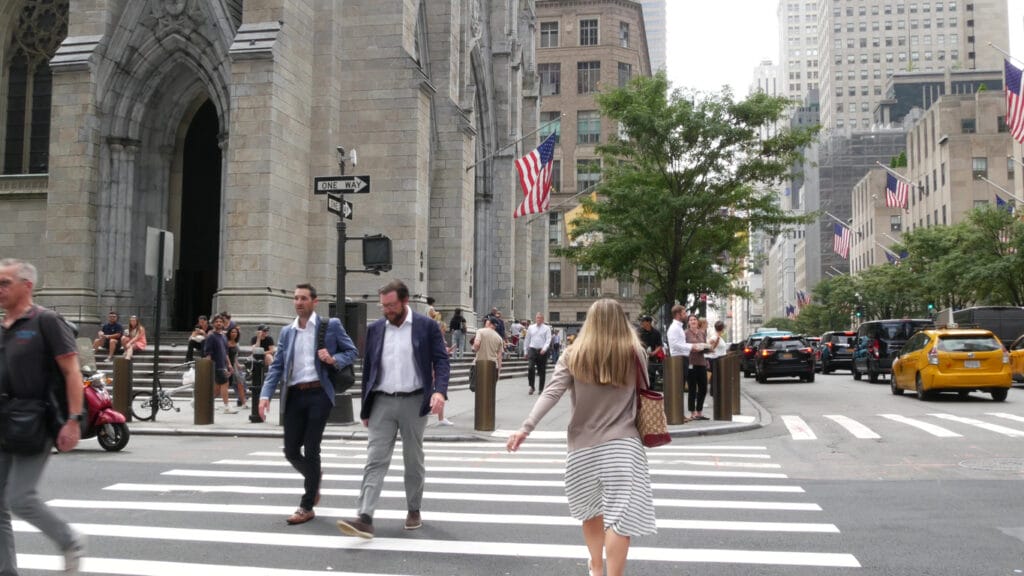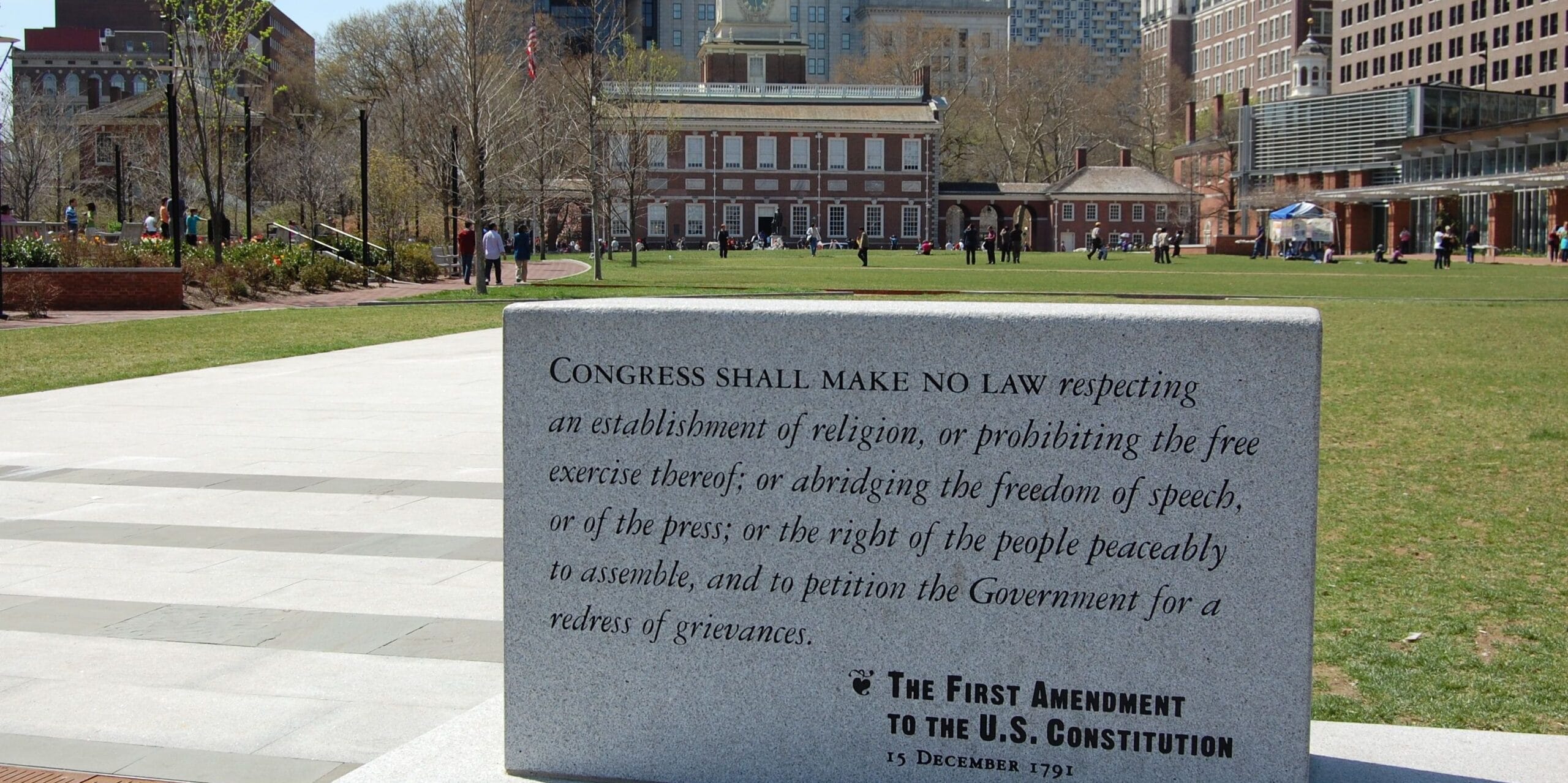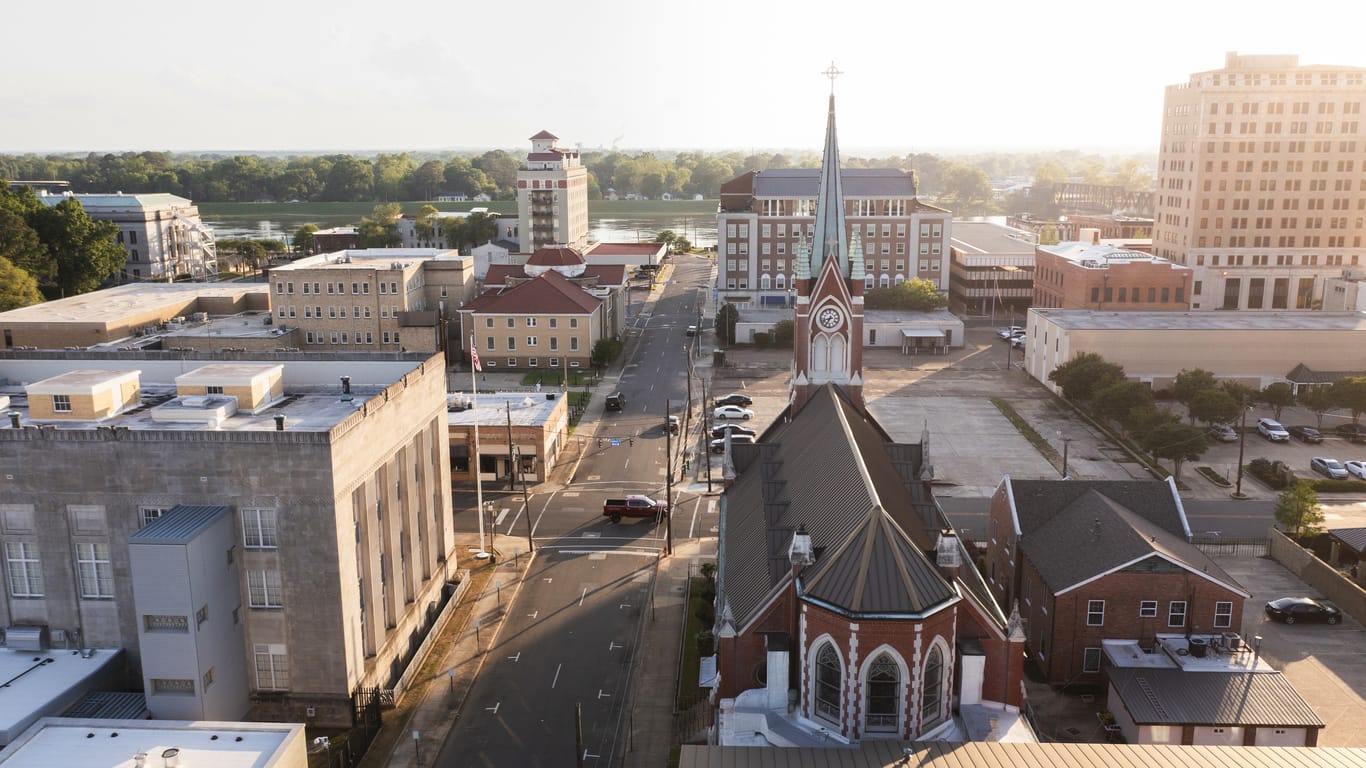Religious Liberty in the United States from 1776 to today

Dating back to the end of the 19th century, the poem “America the Beautiful” captures the dynamism and wonder of the vast American landscape. From “amber waves of grain” to “purple mountain majesties above the fruited plain,” the United States covers a vast area of territory with correspondingly great variety of physical geography. And the human geography of America is just as differentiated, something the Founders realized as both an unavoidable reality as well as an opportunity when forming the original system of American government. American federalism has been integral to our flourishing and development, from 13 colonies in 1776 to 50 states today.
The give and take between national unity and more local diversity is reflected in the tensions between the federal government’s legal and regulatory framework and an individual state’s statutory and constitutional particularity. Perhaps nowhere is this difference more obvious than in the area of religious liberty. The First Amendment to the U.S. Constitution famously limits the purview of the national legislature: “Congress shall make no law respecting an establishment of religion, or prohibiting the free exercise thereof.” As the historian Miles Smith IV observes, however, federal disestablishment left in place a wide variety of postures towards religion in the American states. “Early Republic legislators conceived of the First Amendment very differently than modern Americans do and did not perceive the Constitution as imposing federal will on preexisting establishments,” he writes. It is true, of course, that the states did eventually disestablish their own jurisdictions in the 19th century, even before the incorporation of the Bill of Rights, including the protections outlined in the First Amendment, after 1868.
Even in the context of such uniformity impressed on the American order, however, there remains to this day a great deal of room for states to act in distinctive and intentional ways to protect the free exercise of religion. And while some have argued for reexamining the coherence and legitimacy of understanding disestablishment as it relates to state governments, it is also clear that federalism is enjoying a sort of revival in the 21st century. In their recent law review article interrogating the validity of state-level regulation of religion and morality, Timon Cline, Josh Hammer and Yoram Hazony comment on the resurgence of federalism:
In the wake of the Dobbs decision, America’s sleepy state legislatures have once again emerged as the dominant venue for the most demanding and important political debates, exercising responsibility for republican self-government to an extent they have not known for decades. While opinions vary as to whether the ultimate resolution of the abortion issue, specifically, should be at the state or federal level, it is undeniable that American federalism has been given a new lease on life due to Dobbs.
Since 2022, First Liberty’s Center for Religion, Culture & Democracy has examined in a transparent and empirical fashion these state legislatures as crucibles for the protection of religious exercise. The Religious Liberty in the States (RLS) project is a comprehensive listing and ranking of state-level safeguards for free exercise. In its most recent iteration, the 2025 Religious Liberty in the States[MS1] index covers 47 distinct items organized into 20 different safeguards, ranking states by their adoption of these statutory and constitutional protections. Florida leads the way in 2025, as it has nearly 75% of the protections measured by the project. West Virginia comes in last, with just under 20% of these protections. In between these two, there is significant variance in whether and how states provide legal safeguards for religious liberty.

One great virtue of the RLS project is that it works inductively, only measuring protections that have been actually implemented by at least one state. This provides an immediate level of viability and realism to the index, since it includes only concrete safeguards that actually exist, rather than working from some ideal or even utopian vision of liberty. This approach also means that states have both the ability and the incentive to learn from one another and to continue to expand the horizons of religious liberty in the United States.
In an increasingly pluriform and complex nation, with many different jurisdictions and distinctive approaches to governance and social flourishing, it is apparent that a renewed commitment to federalism is a prerequisite for a healthy America in the 21st century. And as a national commitment to religious liberty has been characteristic of America for its first two and a half centuries, so too must American states work to protect religious liberty in their own domains. The continued development of religious liberty in the United States, including state-level protections and safeguards, is thus a compelling reason for hope as we commemorate America’s semiquincentennial.
Dr. Jordan J. Ballor is executive director of First Liberty’s Center for Religion, Culture & Democracy and a senior fellow at the Henry Institute for the Study of Christianity & Politics at Calvin University.



